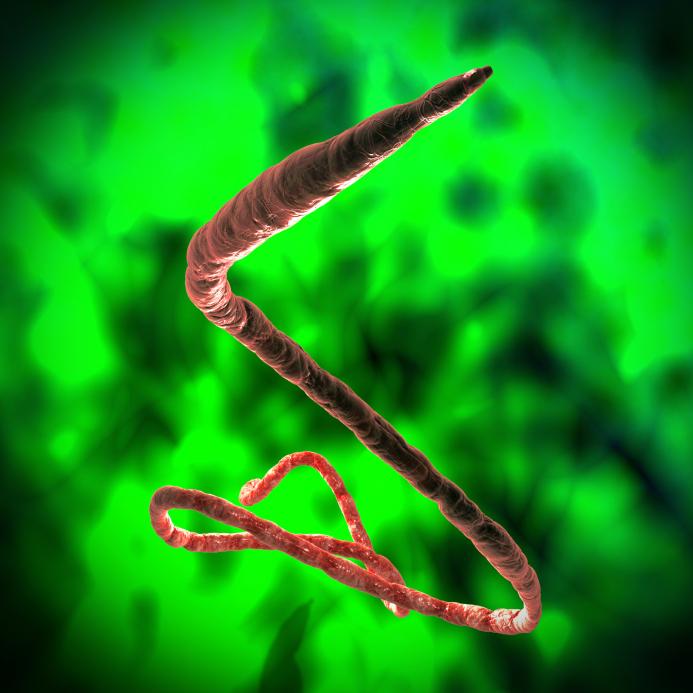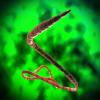Sierra Leone's western area is seeing the most intense Ebola activity, and in Guinea a surge of cases in the southeastern district of Kissidougou propelled the country into its highest weekly case incidence of the outbreak, the World Health Organization (WHO) said today.
With disease activity still intense in all three of the outbreak countries' capitals and sparks flaring or reigniting in some areas, the outbreak total has reached 19,497 cases, along with 7,588 deaths, the WHO said.
And Peter Piot, MD, PhD, who helped identify the Ebola virus in 1976, said West Africa's outbreak will likely last until the end of 2015, according to an update today from the United Nations Mission for Ebola Emergency Response (UNMEER).
Though Sierra Leone has been the disease hot spot over the past few months, Piot, of the London School of Hygiene and Tropical Medicine, said he was encouraged by what he saw during a recent visit to the country. He added that treatment units are in place throughout the country and there are no longer scenes of people dying in the street.
Disease picture varies in each country
For the second week in a row, the WHO said there are signs in Sierra Leone that disease incidence is no longer climbing. The western part of the country is the virus hot spot, and in the middle of December the country's health ministry launched a response surge, with efforts especially focused on the capital, Freetown, and surrounding areas.
In the week up to Dec 21, Sierra Leone reported 315 new confirmed cases, about a third of them in Freetown, according to the WHO. The neighboring Port Loko district experienced a spurt of new cases, but some districts in the eastern and southern parts of the country saw declines last week. The WHO said it's too soon to say if the incidence drop in the southern region will be sustained.
Meanwhile, Guinea confirmed 156 more cases last week, mostly due to the burst of cases in Kissidougou. Previously, the area had been reporting fewer than 5 cases per week, which the WHO said underscores the need for continued vigilance.
Overall, there hasn't been a clear sign since September of whether disease activity in Guinea is dropping or increasing, the WHO said. Transmission is still intense in Conakry, the country's capital, and in the neighboring Coyah district.
In Liberia, case incidence has been declining since the middle of November, but disease activity in the country is still intense, according to the WHO. The country confirmed 21 cases in five districts during the week ending Dec 21. The area of highest activity is still in Montserrado county, which includes the capital city of Monrovia.
One area of concern in Liberia is three new cases—the first in 9 weeks—reported in Nimba district, an area that borders Ivory Coast. On the positive side, Lofa county in northern Guinea hasn't reported a case in 8 weeks, which the WHO said shows the strength of response efforts in the area.
Seven more infections in healthcare workers were reported last week, raising the total so far to 666, of which 366 were fatal. Six of the new cases were in Guinea, and one was in Liberia.
Response goal progress
In its assessment of the response, the WHO said all three countries have enough capacity to isolate sick patients and conduct safe burials, the key tools to fighting Ebola, but the uneven distribution in some areas is creating a shortfall. For example, Guinea's Kindia district reported 10 new cases in the past week, but the area doesn't have an Ebola treatment unit or a community care center, meaning patients must be taken to Conakry for treatment.
The percentage of registered contacts being traced is closely approaching 100% in the three countries, but again, the WHO said the proportion is much lower in some districts—such as 36% in Sierra Leone's Kenema district.
Other developments
- New York City health officials said yesterday that a patient who was at first asymptomatic then got sick after returning from one of West Africa's Ebola countries on Dec 20 was taken to Bellevue Hospital Center yesterday. In an earlier statement the health department said the patient did not have contact with Ebola patients while in West Africa, but due to the travel history and symptoms, he or she was isolated and evaluated. Test results were negative for Ebola, and the patient's medical team has confirmed an alternative diagnosis. The individual is still hospitalized at the facility in critical condition.
- The US military will reassess its role in West Africa's Ebola outbreak in the middle of January, now that work is nearly complete on the last of its treatment centers in Liberia, according to a Dec 22 Wall Street Journal report. Maj Gen Gary Volesky, who is commanding the military's Ebola task force, told the paper that the defense department could redeploy troops to Sierra Leone or Guinea or reduce the size of its mission in Guinea. The US military built 14 treatment units and was involved in the construction of another that was completed before the 101st Airborne Division arrived in Liberia. There are currently 2,400 US service members in Liberia.
- Sierra Leone's Nimiyama chiefdom, located in Kono district, saw its number of Ebola cases rise to 20 over the past 2 weeks after a 2-month lull in activity, according to recent WHO feature story. Philip Musa Koroma, Nimiyama's deputy chief, said the biggest challenge is logistics, because the area has no ambulances and it takes a long time for teams to arrive on long, difficult roads. He said the construction of a community care center, along with the construction of a new treatment center near the district's capital, Koidu, should help the chiefdom isolate and treat Ebola patients quicker.
- A nurse in Sierra Leone returned to work on Dec 22 after recovering from Ebola, according to a Dec 23 WHO feature story. Rebecca Johnson, 28, was working at a care center in Freetown and started having symptoms on Nov14. She was treated at the same health center at which she worked. Johnson said she will wear full personal protective equipment at work, but she won't be afraid, because she now has immunity to the disease.
See also:
Dec 24 WHO Ebola outbreak update
Dec 24 UNMEER update
Dec 24 NYC Health statement
Dec 22 Wall Street Journal story
Dec 24 WHO feature story on Nimiyama Ebola response
Dec 23 WHO feature story on recovered Ebola nurse

















